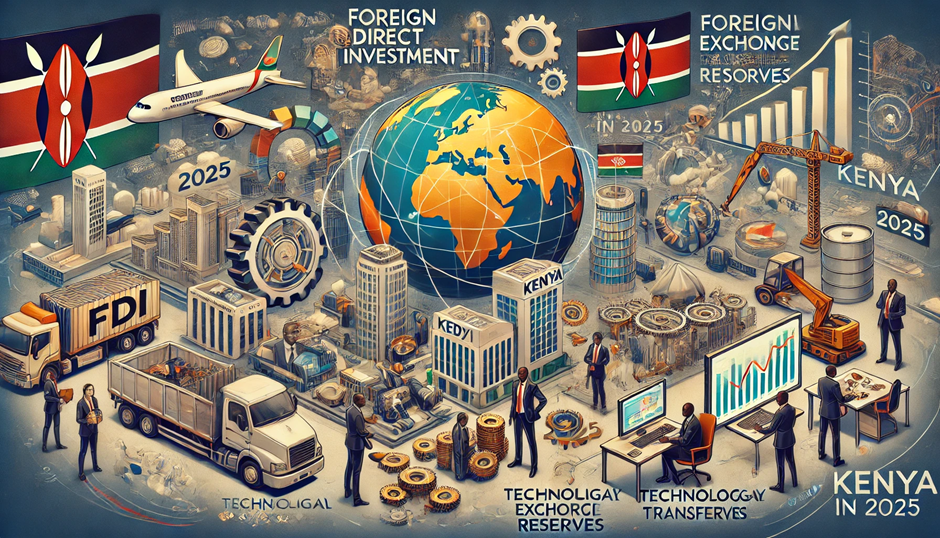
The Battle Between Safaricom, Airtel & Starlink: Who Will Control Kenya’s Internet?

Kenya’s digital journey has been nothing short of transformative. From a nation with limited internet access in the early 2000s to one of Africa’s fastest-growing digital economies, Kenya’s demand for reliable, fast, and affordable internet has never been higher. As we step into an era where connectivity powers everything from remote work and online education to mobile banking and e-health services, three industry players stand tall: Safaricom, Airtel, and the newest disruptor, Starlink.
Kenya’s Digital Transformation: A Contextual Overview
Internet Adoption and Mobile-First Culture
Kenya boasts over 46 million internet subscribers as of 2024, according to the Communications Authority of Kenya (CAK). A significant majority access the web through mobile devices, making Kenya one of the most mobile-first nations globally.
Bridging the Urban-Rural Digital Divide
While urban areas like Nairobi, Mombasa, and Kisumu enjoy relatively stable internet access, vast portions of rural Kenya remain digitally marginalized. This divide has created a fertile battleground for ISPs, each vying to connect the unconnected.
Safaricom: The Reigning Telecom Titan

Source: NTV Kenya
Infrastructure and Market Leadership

Source: HapaKenya
Safaricom has long been synonymous with mobile communication in Kenya. With a network that covers over 96% of the population, it offers a mix of fiber-optic home internet, mobile broadband, and cutting-edge 5G technology in select urban areas.
Bundled Convenience and Ecosystem Play
The company’s strength lies not just in connectivity but in the ecosystem it has built. M-Pesa, Kenya’s leading mobile money platform, is seamlessly integrated with Safaricom services. Users benefit from bundled data, voice, SMS, and payment capabilities—creating a sticky, end-to-end digital experience.
Product Offerings
Safaricom provides tiered internet packages tailored for homes, SMEs, and enterprises. They offer internet and call services at rates designed to accommodate both high-demand users and low-budget consumers.
Airtel Kenya: The Aggressive Challenger

Source: Linkedln
Affordability as a Strategy
If Safaricom is the Goliath, Airtel is the nimble David. Its market strategy centers on affordability and simplicity, appealing primarily to Kenya’s youth, students, and budget-conscious consumers.
Growing 4G and 5G Footprint
Over the past few years, Airtel has aggressively rolled out 4G towers across the country and announced its 5G expansion plans in 2024. The company is keen to provide high-speed access even in peri-urban and underserved areas.
Bundled Services
Airtel’s packages often include generous data, voice minutes, and SMS quotas. They provide internet and voice bundles at competitive prices, which are regularly updated to suit changing user needs.
Starlink: The Disruptive Outsider

Source: Space in Africa
A New Frontier in Connectivity
Starlink, the satellite internet venture by Elon Musk’s SpaceX, officially entered the Kenyan market in 2023. Unlike traditional ISPs, Starlink bypasses ground infrastructure by delivering internet via low Earth orbit (LEO) satellites.
Target Market: Rural and Remote Kenya
Starlink’s proposition is simple: connect anyone, anywhere. From the highlands of Elgeyo Marakwet to the deserts of Turkana, Starlink offers rural users access to fast, stable internet without relying on cell towers or fiber lines.
Cost Consideration and Adoption
The initial hardware cost may be high, but for institutions, farms, schools, or individuals in isolated areas, the return on connectivity is invaluable. Starlink offers a fixed internet and call package based on a monthly subscription model.
Head-to-Head Analysis: Who Has the Upper Hand?
Market Share and Penetration
- Safaricom holds the lion’s share of Kenya’s mobile and fiber broadband market.
- Airtel is the second-largest player and growing steadily.
- Starlink is still new but rapidly gaining popularity in rural sectors.
Innovation and Tech Leadership
- Safaricom leads in deploying 5G and integrated mobile money.
- Airtel is pushing digital device financing and 4G for all.
- Starlink is bringing global satellite tech to local problems.
Consumer Experience
- Safaricom is praised for quality and reliability.
- Airtel wins in affordability and flexible data options.
- Starlink scores in rural accessibility and speed.
Challenges Faced by Each Provider

Source: iStock
Safaricom
- Pricing perceived as high for low-income users
- Limited reach in rural Kenya despite dominance
Airtel
- Quality inconsistencies in some regions
- Lagging behind in brand trust compared to Safaricom
Starlink
- High setup and hardware costs
- Requires clear sky views and stable power supply
The Road Ahead: What Does the Future Hold?

Source: Telecom Review Africa
Converging Technologies
Kenya’s future internet ecosystem will likely be multi-modal: combining mobile networks, fiber broadband, and satellite-based solutions.
Collaborations and Public Policy
Expect more partnerships between the government and private players to accelerate last-mile connectivity, especially in alignment with Kenya’s Vision 2030 and Digital Superhighway Agenda.
Empowered Consumer, Competitive Market
Ultimately, the real winner will be Kenyan internet users, who now enjoy unprecedented choice, better service, and more accountability.
Conclusion
Kenya’s internet landscape is a dynamic battlefield where legacy infrastructure, cost-efficiency, and space-age technology collide. Safaricom, Airtel, and Starlink are reshaping the way Kenyans connect, communicate, and innovate. As competition heats up, innovation will accelerate, and prices will normalize—unlocking digital potential for every Kenyan, regardless of location.
The war for Kenya’s internet isn’t about one company winning; it’s about ensuring that every Kenyan wins in the digital age.
References








